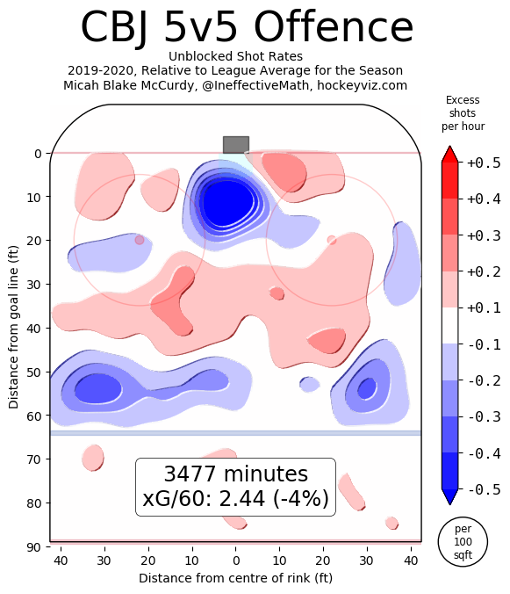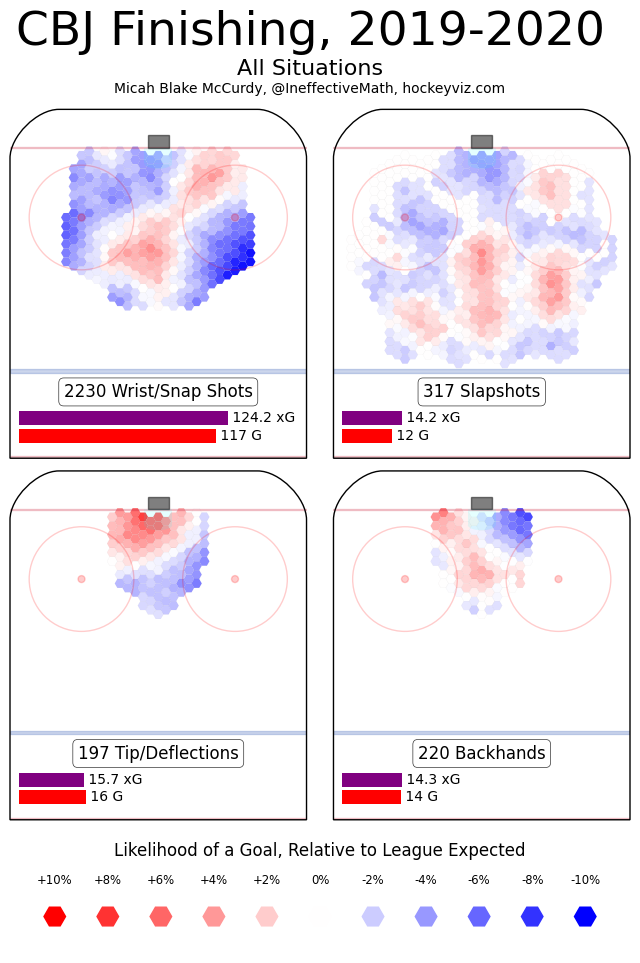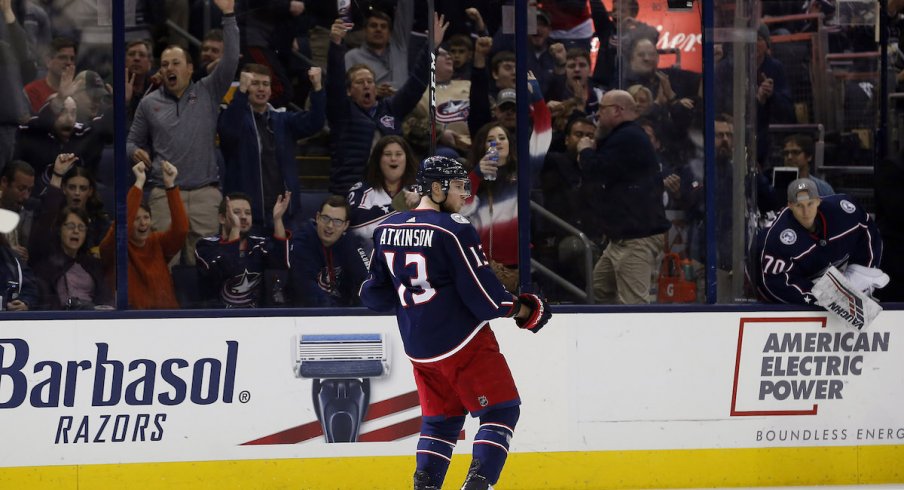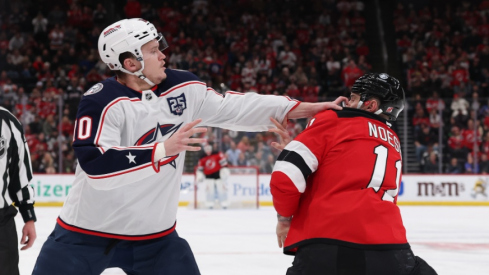The Blue Jackets need more offense.
It’s an assessment that has been said routinely throughout the 2019-20 season, and now, with an off-season upon us where GM Jarmo Kekalainen is said to be focused on remedying this issue, “more offense” remains a hot topic of conversation.
But in order to fix a problem, we must understand its roots. Of course wins are the ultimate measure, but wins come from goals, goals come from shots, systems, and execution of all of the above. So what exactly may have been missing in the Blue Jackets’ offense this past season?
Let’s start with the basics.
According to Evolving-Hockey.com, Columbus ranked 29th in the league (all situations) in goals per 60 minutes of play (2.53). That doesn’t sound good. But was that bad luck? Or were there things to fix in the team’s underlying behavior? We can ask ourselves if the team was shooting the puck enough – the answer is, perhaps not.
Columbus came in 20th overall (all situations) in unblocked shots per 60 minutes of play (41.79), but they were also 29th in team shooting percentage (7.92).
So that raises more questions that are harder to answer. Was this team just unlucky? Were they taking the right kind of shots? Shot locations can tell us some of that. The visual below from HockeyViz.com marks from where on the ice the Blue Jackets fired pucks off their sticks. Red indicates locations where shot volume was above league average, blue indicates where shot volume was below league average. The darker the color, the larger the difference from average.

This season, Columbus attacked from the periphery and had a hard time getting to the front of the net. They also didn’t fire off shots much from the points. Now we know where the majority of the shots were coming from, but can we figure out how the Blue Jackets performed specifically from those areas? Our overall shot metrics (volume and shooting percentage) include the entire ice and aren’t location specific.
Thanks to HockeyViz’s Micah Blake McCurdy’s “Finishing” model, we’re starting to be able to answer that question.
McCurdy’s model contemplates not just shot location but also shot type (slap / snap shot; backhander; tip/deflection) and whether or not a shot was a rush chance or a rebound. Then, all of that information is compared to league averages to see how a team performed relative to all NHL teams.
In short, as McCurdy explains, “Finishing” seeks to answer a key question: “given the shots you chose to take, how well did you do?”
Let’s see how the Blue Jackets fared.
Again, red indicates success above league average; blue indicates below league average; the bars below each chart show how many goals the team should have expected to score (expected goals (xG) marked purple) compare to how many the team did score (goals marked red).

First, we see that there was no significant strength for the Blue Jackets this season as far as shot type. Further, while they stay in-step with the league trend that a vast majority of shots are wrist or snap shots, the team wasn’t able to meet expectations – something of concern given how many shots came in that form. We also see that areas of scoring advantage for Columbus (net-front tips/deflections and in the slot) weren’t really areas where the team was generating a lot of chances from.
Compare this to the 2018-19 season where the Blue Jackets were able to get more net front traffic, and also better capitalize on the locations they liked to shoot from.

So, a clearer picture starts to come into play in terms of what was lacking in Columbus’ offensive production this season. Shot locations weren’t really aligning with where goals were most likely to come from for this team, and given a lower overall rate of shooting, this made their likelihood of finishing even more slim.
So now we see the team view – but players make up that effort. Can we tease out which Blue Jacket may or may not have been most effective in their finishing this season? We can. And we’ll dig into that question for both the forward corps and the defense in coming weeks.
NOTES: Finishing – as represented in McCurdy’s model – does not answer the question of if it was wise for a team or player to take the shots they did. It also specifically doesn’t contemplate if a goaltender was screened; the type of rush in which a shot came; or, any kind of pre-shot movement (did a cross crease pass lead to the shot? How did the shot set up?)

